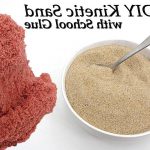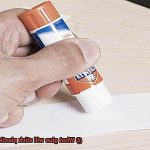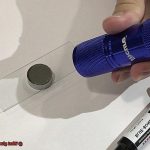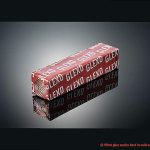Ever found yourself in a sticky situation, desperately trying to mend your beloved garment? Or embarked on a creative journey, only to be thwarted by the lack of adhesive options for fabric? Fear not, my friends, as we dive into the captivating world of fabric glue – the unsung hero that repairs and innovates textiles with ease.
Join us on this thrilling adventure as we unravel the mystery behind finding the best glue for fabric. We’ll explore different types, characteristics, and insider tips that will keep you glued to success. Get ready to be amazed by the plethora of options available, catering to every fabric and project under the sun.
In our quest for the ultimate adhesive solution, we’ll uncover the secret behind achieving a perfect bond between fabric and glue. From versatile liquid adhesives and fabric glues to specialized alternatives like fusible web and hot glue guns – we won’t leave any stone unturned in this captivating journey through the adhesive universe.
Discover hidden properties that make certain glues excel on delicate silk or ultra-flexible jersey, while others conquer rugged denim or heavy-duty upholstery. Learn how to navigate the vast marketplace of fabric adhesives, making informed choices based on your specific needs.
Whether you’re a crafting enthusiast, fashionista, or simply someone plagued by everyday accidents resulting in torn seams or loose buttons – this exploration of fabric glue will arm you with knowledge and confidence to conquer any fabric-oriented project that comes your way.
So buckle up and prepare yourself to become a master of fusion in the realm of fabric and glue. Get ready to unlock secrets that will revolutionize your DIY projects, leaving you basking in adhesive glory with seamless repairs and awe-inspiring creations.
Stay tuned for our upcoming blog posts where we put our newfound knowledge to test and reveal top contenders vying for the title of best glue for fabric.
Remember, when it comes to the bond that holds your fabric together, knowledge truly is the key to success.
Types of Glue for Fabric
Contents
- 1 Types of Glue for Fabric
- 2 Factors to Consider When Choosing the Right Glue for Fabric Projects
- 3 Benefits of Using Fabric Glue
- 4 Benefits of Using Hot Glue on Fabrics
- 5 Benefits of Using Epoxy Glue on Fabrics
- 6 Benefits of Using Spray Adhesive on Fabrics
- 7 Benefits of Using Specialty Glues on Fabrics
- 8 Tips for Working with Different Types of Adhesives on Fabrics
- 9 Conclusion
Crafting with fabric requires the perfect adhesive to bring your creations to life. With a plethora of options available, it can be overwhelming to find the right glue for your project. But fear not, fabric enthusiasts.
Here, we’ll explore the diverse world of fabric glue and uncover the unique properties of each type. So, grab your scissors, thread, and let’s dive into the sticky world of fabric glue.
Fusible Web: Iron-On Magic
Fusible web is like a magician’s secret weapon. This thin adhesive material can be ironed onto fabric to create a permanent bond. It’s commonly used in appliqué projects or when attaching patches or badges to fabric.
With fusible web, you can achieve seamless designs without the need for sewing. Simply cut out your desired shape, iron it onto your fabric, and watch the magic happen.
Spray Adhesive: Temporary Bonds and Easy Repositioning
For temporary bonds or fixing fabrics temporarily, spray adhesive comes to the rescue. This adhesive is applied by spraying a thin layer onto the fabric surface, providing an even and consistent coverage. The best part? Spray adhesive allows for repositioning before it sets permanently, making it perfect for upholstery projects or attaching fabric to other surfaces.
So, if you’re reupholstering furniture or creating temporary fabric attachments, spray adhesive is your best friend.
Fabric Glue
Fabric glue offers a plethora of advantages over traditional sewing methods. Say goodbye to the hassle of threading needles and maneuvering through intricate stitches. With fabric glue, bonding fabric materials together is quick and easy. It’s perfect for repairing garments, attaching trims or embellishments, and creating fabric-based crafts that demand precision and finesse.
One of the standout features of fabric glue is its remarkable flexibility. Unlike regular glue that dries stiff and rigid, fabric glue remains pliable even after it sets. This means that your clothing and accessories will retain their much-needed movement and stretchability. No more feeling confined or restricted in your favorite garments.
But that’s not all – fabric glue is also designed to withstand the elements. Many fabric glues are waterproof or water-resistant, making them ideal for projects that may encounter moisture or require washing. No need to worry about your carefully crafted pieces falling apart in the rain or losing their charm after a trip through the washing machine.
Now, let’s dive into the exciting world of different types and brands of fabric glue. Just like fabrics themselves, there is a wide array of options available, each with its own unique characteristics and recommended uses. Some glues are specifically tailored for lightweight fabrics, while others are crafted to tackle heavier materials with ease. It’s crucial to select the right type of fabric glue based on your specific project and the type of fabric you’re working with.
When using fabric glue, precision and attention to detail are key. Following the manufacturer’s instructions is essential for optimal adhesion and longevity. Prepare your surfaces by ensuring they are clean and dry – a solid foundation for a strong bond. Apply the glue sparingly, avoiding excess seepage or unsightly stains on your fabric. Depending on the type of fabric glue, some may require heat setting with an iron to activate the adhesive, while others simply need air drying.
Hot Glue
Hot glue is the ultimate adhesive superhero, a thermoplastic wonder that transforms into a liquid state when heated and solidifies as it cools, creating an unbreakable connection between fabric pieces.
But why is hot glue the go-to choice for fabric enthusiasts? Let’s explore its incredible advantages. First and foremost, hot glue is incredibly versatile. It fearlessly tackles fabrics of all kinds, from delicate cotton and luxurious silk to heavy-duty denim and sturdy canvas.
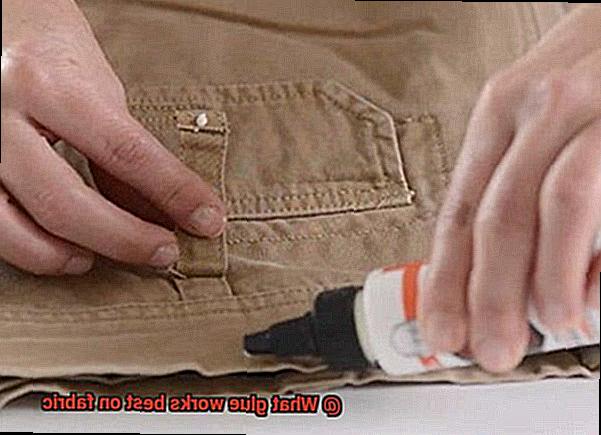
Hot glue doesn’t stop at fabric – it fearlessly bonds with other materials like wood, metal, and plastic, making it a dream-come-true for mixed-media projects that crave a little adhesive magic.
Now, let’s delve into the nitty-gritty details of using hot glue on fabric. Temperature is the key to success in this adhesive adventure. With adjustable temperature settings on most hot glue guns, you have the power to choose the perfect heat for your fabric’s needs.
Delicate fabrics call for lower temperatures, while thicker or more stubborn materials require a little extra heat. Start low, rise higher if necessary – it’s a temperature dance of precision and care to protect your precious fabrics from any unwanted damage.
Applying hot glue to fabric is as easy as 1, 2, 3 – just load a glue stick into your trusty glue gun and wait for it to heat up. When that liquid gold is ready for action, squeeze out a small amount onto the fabric where you want the bond to form.
Press those fabric pieces together firmly before the glue hardens, harnessing the power of heat and pliability for a bond that’s as secure as Fort Knox. Oh, and don’t forget – speed is your ally here; hot glue dries faster than a cheetah chasing its prey, so work swiftly to ensure a flawless finish.
Epoxy Glue
As a connoisseur of adhesives, I am here to unveil the secrets behind why epoxy glue is an absolute game-changer in the realm of fabric bonding. So, fasten your seatbelts and prepare yourself for an adhesive adventure like no other.
Let’s begin by exploring the remarkable advantages of using epoxy glue on fabric. One of its greatest strengths lies in its ability to adhere to a wide range of fabric types. Whether you’re dealing with cotton, denim, silk, or polyester, epoxy glue has got your back.
Its bond is not only strong but also durable, ensuring that your fabric creations stand the test of time. From repairing torn clothing to crafting sensational fabric masterpieces, epoxy glue is the ultimate sidekick.
Hold on tight, because we’re about to dive into the nitty-gritty details. When working with epoxy glue on fabric, it is vital to carefully heed the manufacturer’s instructions. This typically involves mixing two components – the resin and the hardener – in equal proportions. Once mixed, this glorious concoction is applied to the fabric, left to cure for a specified duration.
Now, let’s talk about patience. Epoxy glue takes its sweet time to dry compared to other adhesives. So, my dear fabric enthusiasts, patience truly is a virtue here. Allowing sufficient drying and curing time before handling or wearing your precious fabric creations is crucial.
Rushing this process might result in a weakened bond or even spell disaster for your cherished fabrics. And we certainly don’t want that catastrophe on our hands.
However, it’s essential to recognize that while epoxy glue possesses superhero powers in the world of bonding, it may not be a perfect match for all fabrics or applications. Delicate or sheer fabrics, for instance, might not bode well with epoxy glue, as it tends to create a stiff and rigid texture.
To avoid any fabric fiascos, I highly recommend conducting a small test on a hidden area before embarking on your grand fabric project. Trust me, this small act of precaution goes a long way in ensuring triumph.
Spray Adhesive
Get ready to be amazed by this nifty bonding buddy. In our previous section, we delved into the world of epoxy glue on fabric, but now it’s time to switch gears and uncover the advantages of using spray adhesive. Hold on tight as we embark on this exciting journey.
Let’s start by talking about the incredible application power of spray adhesive. Say goodbye to uneven gluing struggles. With its aerosol can, spray adhesive allows for a quick and even application. Imagine working with large fabric pieces or intricate designs that require precise adhesive placement. Spray adhesive has got your back. Its fine mist of glue covers the fabric evenly, ensuring a strong bond. No more messy globs or patchy application – spray adhesive makes it a breeze.
Spray adhesive offers another remarkable advantage – temporary bonding. Unlike other glues that create an immediate permanent bond, spray adhesive grants you some flexibility. You can reposition and adjust your fabric before the bond becomes permanent.
This feature is a game-changer when working with delicate fabrics or when precise alignment is crucial. So go ahead and experiment with different placements, knowing that you have the power to make changes before committing to a permanent bond.
Now let’s talk versatility – spray adhesive is a true magician when it comes to bonding various types of fabrics together. Whether you’re dealing with cotton, silk, polyester, or even heavier fabrics like denim or canvas, spray adhesive has got you covered.
Just remember to check the product label or consult the manufacturer’s instructions for any specific recommendations regarding fabric compatibility. Double-checking ensures a successful bond every time.
Now for some practical tips when using spray adhesive on fabric. Safety first. Make sure you’re in a well-ventilated area when applying the adhesive to avoid inhaling any fumes. We want you to enjoy your fabric projects without any unpleasant side effects, right? Additionally, apply the adhesive in light coats and allow it to dry slightly before pressing the fabric together. This extra step ensures better adhesion and minimizes the risk of oversaturation or bleeding through the fabric. Patience is key here.
Specialty Glues
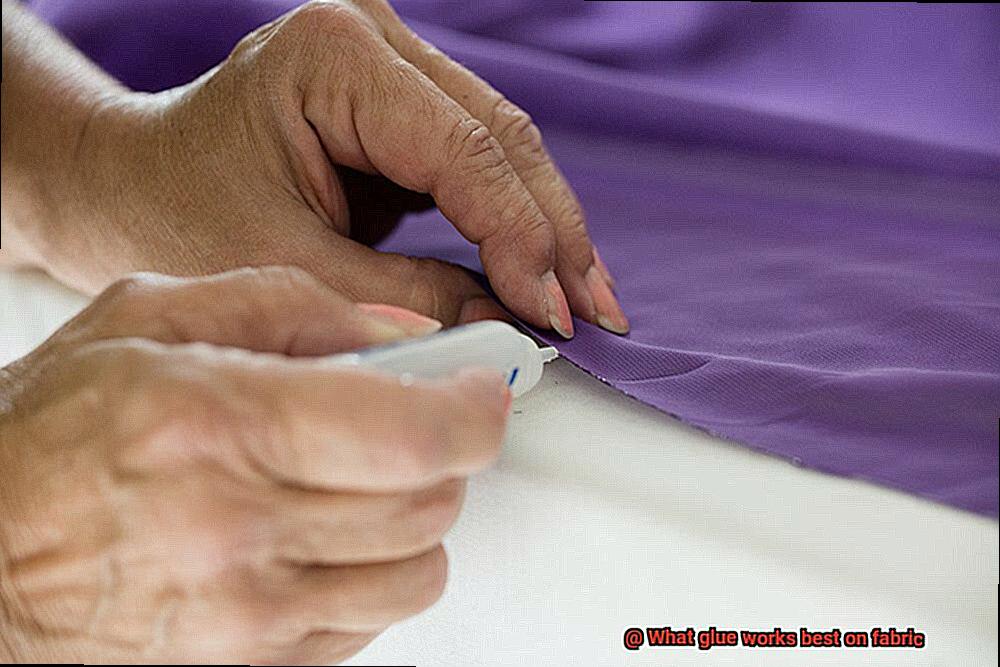
These magical glues are specifically designed to cater to different fabric types and unique bonding needs. They offer a whole new level of properties and benefits that regular fabric glues simply can’t match. Let’s delve into the diverse range of specialty glues and discover how to use them effectively.
Types of specialty glues:
- Fabric glue sticks: These convenient stick glues are perfect for quick repairs or smaller projects. They provide a strong bond and are ideal for lightweight fabrics.
- Fusible webbing: Activate this glue with heat for hemming or bonding two layers of fabric together. It creates a permanent bond when ironed, ensuring durability.
- Leather adhesive: Tailored for bonding leather materials, this glue provides a strong and flexible bond, making it perfect for leather repairs or projects.
- Vinyl adhesive: Designed specifically for vinyl or PVC materials, this glue creates a durable and waterproof bond, making it ideal for repairing or attaching vinyl fabrics.
- Spray adhesive: With its aerosol form, this glue is easily applied by spraying onto the fabric surface. It provides even and uniform coverage, making it suitable for larger fabric projects or attaching fabric to other surfaces.
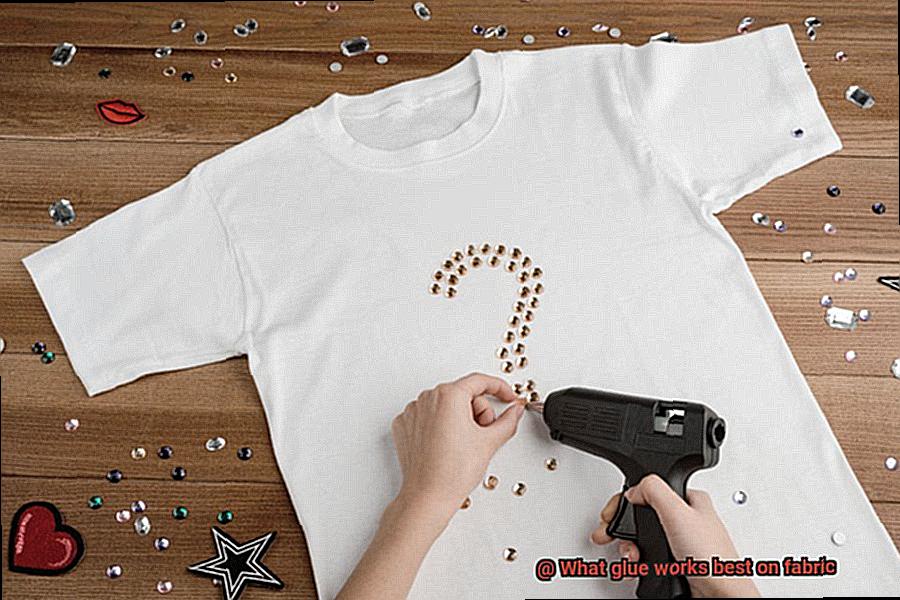
Considerations when using specialty glues:
To ensure success with specialty glues, keep the following factors in mind:
- Compatibility with fabric: Always choose a glue that is compatible with the fabric you’re working with. Read product labels or do a test patch to avoid any mishaps.
- Drying time: Different specialty glues have varying drying times, so consider this factor depending on your project requirements. Some dry quickly, while others may require longer drying periods.
- Washability: If you plan to wash the fabric item after gluing, check if the specialty glue is machine washable or hand washable. Some glues may not withstand repeated washing or may require specific care instructions.
Tips for using specialty glues effectively:
To achieve optimal results, follow these tips:
- Clean and prepare the fabric surface before applying the glue to ensure a strong bond.
- Adhere to the manufacturer’s instructions regarding application and drying times for best results.
- Use the appropriate amount of glue to avoid excess that can seep through the fabric or cause stiffness.
- For delicate or intricate projects, consider using a small brush or applicator for precise application.
- Allow the glue to fully cure or dry before handling or using the fabric item.
Factors to Consider When Choosing the Right Glue for Fabric Projects
When it comes to fabric projects, selecting the right glue is essential for achieving professional and long-lasting results. With countless options available, it can be overwhelming to determine which glue is best suited for your specific needs.
As an expert in fabric glues, I’m here to share insider knowledge on the factors you should consider when choosing the perfect glue for your fabric projects. So grab a cup of coffee, sit back, and let’s dive in.
Factor 1: Fabric Type – The Starting Point
Different fabrics have unique properties and characteristics, necessitating specific glues. Delicate fabrics like silk or lace demand a gentle adhesive that won’t damage or discolor the material. Conversely, heavy-duty fabrics like denim or canvas require a stronger adhesive to withstand daily wear and tear. Before purchasing any glue, take a moment to consider the type of fabric you’ll be working with.
Factor 2: Bonding Strength – The Power of Sticking Together
The strength of the bond required for your fabric project is another crucial factor to consider. For permanent bonds like hemming pants or attaching patches, opt for a glue with robust bonding properties. However, if your project only requires temporary bonding, such as attaching embellishments or decorative elements, a temporary fabric glue or adhesive spray would be more suitable.
Factor 3: Washability – Keep it Clean and Long-Lasting
If your fabric project will be exposed to water or require regular washing, it’s crucial to choose a washable glue. Look for glues specifically designed to be waterproof and machine washable to ensure that your hard work remains intact even after multiple washes.
Factor 4: Drying Time – Patience is a Virtue
Consider the drying time of the glue you choose, as it can impact the efficiency and convenience of your fabric project. Quick-drying glues allow you to proceed without much waiting time, while slower-drying glues may require clamping or additional support during the drying process. Ensure you factor in the drying time based on your project’s timeline and requirements.
Benefits of Using Fabric Glue
First and foremost, let’s talk about how insanely easy fabric glue is to use. No more dealing with needles, threads, or complicated stitching techniques. With fabric glue, all you have to do is squeeze it out of the bottle or use a brush applicator. It’s as simple as that. Say goodbye to the struggles of sewing machines and tangled threads.
But wait, there’s more. Fabric glue is lightning fast when it comes to drying. Unlike sewing, where you have to wait for stitches to secure seams, fabric glue bonds fabrics together in an instant. It’s perfect for those urgent repairs or last-minute alterations that always seem to creep up on us.
Now let’s talk about strength. Fabric glue creates rock-solid bonds that can withstand regular wear and tear, as well as multiple washes. Whether you’re hemming pants, patching up a hole, or adding some fancy embellishments, fabric glue has got you covered. It’s like having a superhero adhesive fighting for the longevity of your projects.
Versatility is another superpower of fabric glue. It can be used on a wide range of fabrics – cotton, denim, silk, polyester, you name it. No matter what type of fabric you’re working with, fabric glue is there to lend a helping hand. It’s like having a multi-purpose adhesive that works wonders on lightweight and heavy-duty fabrics alike.
Now here’s the real game-changer – no more visible stitches. With fabric glue, you can bid farewell to those pesky puncture holes and unsightly stitches on the surface of your fabric. The result? A cleaner and more professional-looking finish. Plus, you can attach embellishments like rhinestones, sequins, or beads without the need for extra stitching. Talk about convenience and style.
But wait, there’s more. Fabric glue is not afraid of water. In fact, it’s often water-resistant or even waterproof once dried. This means that fabrics bonded with fabric glue can brave the elements without compromising the integrity of the bond. So if you’re crafting outdoor items or anything that might come into contact with water, fabric glue is your trusty sidekick.
Benefits of Using Hot Glue on Fabrics
Whether you’re a crafting aficionado or just dipping your toes into the creative waters, hot glue is a game-changer for your fabric projects. Let’s uncover the incredible benefits of using hot glue on fabrics and see why it’s the go-to adhesive for many.
First and foremost, let’s talk about the impressive strength of the bond created by hot glue. No matter if you’re working with delicate silk or heavy denim, hot glue forms a secure bond that stands the test of time. Say goodbye to loose seams and unsightly stitches – hot glue has your back.
Now, are you tired of waiting for hours on end for your masterpiece to dry? With hot glue, there’s no need to twiddle your thumbs. Its quick drying time means you can move forward with your project without delay. Perfect for time-sensitive endeavors or when you have a laundry list of tasks to tackle.
Versatility is another superstar quality of hot glue on fabrics. It effortlessly adheres to a wide range of fabric types – from natural fibers like cotton to synthetic materials like polyester and satin. This versatility opens up a world of possibilities for your fabric projects. Whether you’re hemming garments, attaching embellishments, or creating fabulous fabric accessories, hot glue is up to the task.
But wait, there’s more. Applying hot glue to fabrics is as easy as 1-2-Armed with a trusty hot glue gun and some glue sticks, you’re ready to roll. Simply plug in the gun, let it heat up, and apply the melted glue onto the fabric with controlled precision. The ease of application makes hot glue a dream come true for both beginners and seasoned crafters alike.
One of the greatest perks of using hot glue on fabrics is its washability and durability. You can confidently toss your fabric creations into the washing machine without fear of the glue coming undone. Hot glue ensures that your projects stay intact, even after multiple washes. Just remember, it may not be suitable for fabrics that need frequent washing or endure extreme conditions.
Benefits of Using Epoxy Glue on Fabrics
Move over, hot glue. There’s a new hero in the world of fabric crafting – epoxy glue. If you’re tired of your fabric projects falling apart or losing their allure, it’s time to embrace the power of epoxy glue. As an expert in the field, I’m here to unveil the incredible benefits that epoxy glue brings to your fabric creations. So, let your imagination soar and join me on this exhilarating journey.
Unbreakable Bonds that Last:
Durability is the name of the game, and epoxy glue is the champion. Its mighty bond stands strong against the test of time, ensuring your fabric projects remain intact even after countless washes. Wave goodbye to loose threads and frayed edges – with epoxy glue, your creations will defy wear and tear.
Defying the Elements:
Moisture may be a formidable foe for fabrics, but worry not. Epoxy glue is here to save the day. Its exceptional resistance to water and moisture shields your fabric projects from damage in liquid-filled or damp environments. Whether it’s a raincoat, a swimsuit, or outdoor upholstery, epoxy glue has got your back.
Versatility at Its Finest:
Epoxy glue is a true chameleon, effortlessly bonding with a vast array of fabric types. From cotton and polyester to delicate silk, there are no limits to its versatility. Regardless of your fabric craft, repair, or DIY project, epoxy glue is your trusted companion. Bid farewell to compatibility concerns – epoxy glue embraces them all.
Standing Strong in the Heat:
High temperatures won’t faze epoxy glue – it thrives under heat’s scorching gaze. This adhesive boasts impressive heat resistance, making it ideal for fabrics that may encounter fiery circumstances. Attach fabric to metal surfaces or create heat-resistant patches on your favorite clothing items with confidence – epoxy glue won’t waver.
Flawless Finish, Seamless Bond:
Epoxy glue is an artist at heart, ensuring a flawlessly seamless bond between fabric pieces. No unsightly residue or marks will tarnish your masterpiece. The result? A clean and professional finish that elevates the overall appearance of your fabric project. Prepare to dazzle the world with your impeccable craftsmanship.
Benefits of Using Spray Adhesive on Fabrics
In the world of fabric crafting, the right adhesive can make all the difference in achieving flawless finishes and durable creations. Move over hot glue, there’s a new hero in town – spray adhesive. With its convenience, versatility, and ability to provide a strong bond, spray adhesive is revolutionizing the way we work with fabrics. So, let’s dive in and explore the exciting benefits of using spray adhesive on fabrics.
Precision and Adjustments: A Temporary Bond
Spray adhesive offers a unique advantage – a temporary bond. This means that you can reposition and adjust your fabric before the adhesive fully sets. No more frustration with misaligned patterns or delicate fabrics that easily stretch or warp. Spray adhesive allows for precise placements and perfect adjustments with ease.
Efficiency at Its Finest: Quick Drying Time
Time is of the essence, especially when working on time-sensitive projects or juggling multiple steps. Say goodbye to waiting around for glue to dry. Spray adhesive boasts a quick drying time, allowing you to swiftly move forward with your project. While other glues take their sweet time, spray adhesive bonds fabrics together almost instantly. Get ready to unleash your creativity at lightning speed.
Unbreakable Bonds: Strength and Durability
Nobody wants their hard work to unravel or fall apart with regular use or handling. Luckily, spray adhesive creates a bond that’s as strong as steel once fully dried. From everyday items like tote bags to decorative pillows that stand the test of time, spray adhesive ensures that your bonded fabrics stay firmly in place. Rest assured knowing that your creations will withstand whatever comes their way.
Versatility Unlimited: Embracing All Fabric Types
Whether you’re working with cotton, silk, polyester, or any other common fabric, spray adhesive is your ultimate ally. It effortlessly handles both natural and synthetic materials, accommodating different thicknesses of fabric. Say goodbye to the hassle of using multiple adhesives for different projects. Spray adhesive is the all-in-one solution that empowers your imagination to run wild.
Benefits of Using Specialty Glues on Fabrics
Upgrade your adhesive game and discover the incredible benefits of using specialty glues on fabrics. With their stronger bond, versatility, washability, no-sewing requirement, invisible bond, easy application, non-toxic options, and quick drying time, specialty glues are a game-changer for fabric crafting.
Say goodbye to struggling with regular craft glues that just don’t cut it when it comes to bonding fabrics. Specialty glues provide a stronger bond, specifically designed to adhere to different types of fabrics. This ensures a secure and long-lasting bond, even with delicate or fragile fabrics that tear or fray easily. Your creations will stand strong with specialty glues.
The versatility of specialty glues is another key advantage. Whether you need to bond fabrics together or attach fabric to other materials like wood, metal, or plastic, there’s a specialty glue for every need. This opens up a world of creativity and flexibility in various crafting or sewing projects.
Washing your fabric creations shouldn’t be a worry. Many specialty fabric glues are designed to withstand washing and dry cleaning. They remain intact even after multiple washes, ensuring a strong and durable bond between fabric pieces. Clothing repairs or fabric embellishments on garments are now hassle-free with washable specialty glues.
No sewing skills or access to a sewing machine? No problem. Specialty fabric glues eliminate the need for sewing in certain applications. Gluing fabrics together is quick and easy, saving you time and effort. It’s the perfect alternative for those who prefer a no-sew approach.
One of the most remarkable benefits of specialty fabric glues is their ability to create an invisible bond. Unlike regular craft glues that leave visible residue or create a stiff texture on fabrics, specialty glues dry clear and seamlessly blend with the fabric. Your creations maintain their original appearance and texture, giving them a professional finish.
Application is a breeze with specialty fabric glues. They come with user-friendly applicators like squeeze bottles or fine-tip nozzles, ensuring accurate and precise application. The glue spreads evenly without excessive dripping or smearing, resulting in a clean and neat finish.
Safety is always a concern, especially when working on fabric-related crafts involving children or individuals with sensitivities. Many specialty fabric glues are formulated to be non-toxic, providing peace of mind. They are free from harmful chemicals and fumes, making them safe to use for various projects.
Tips for Working with Different Types of Adhesives on Fabrics
Adhesives are your magical tools for bringing together different materials and creating stunning projects. But not all adhesives are created equal, and knowing how to work with them effectively is key to achieving successful results. Join us as we explore the secrets to mastering the art of adhesive bonding on fabrics with these valuable tips.
Understand Your Fabric’s Personality:
Fabrics have unique personalities, just like people. Some are delicate and require tender care, while others are sturdy and can handle tougher bonding techniques. Before choosing an adhesive, take the time to understand your fabric’s personality. Is it lightweight and flowing like chiffon, or thick and durable like denim? By considering your fabric’s characteristics, you can select an adhesive that is compatible and ensures a strong bond.
Patch Test for Safe Adventures:
Embarking on a new adhesive adventure can be exciting, but it’s always wise to start with caution. Conduct a patch test in an inconspicuous area before committing to full-scale bonding. Apply a small amount of adhesive and observe its interaction with the fabric. Does it create a secure bond without leaving any marks or discoloration? This preliminary test can save you from potential mishaps and guarantee success in your project.
Choose the Perfect Sidekick:
Every fabric project needs a reliable sidekick – an adhesive that complements your goals and material type. There are various options available, including fabric glue, tape, fusible webbing, and spray adhesives. Fabric glue is versatile but may not offer durability for heavy-duty applications. Fabric tape provides temporary bonding for quick fixes or alterations. Fusible webbing creates a permanent bond when heat is applied, ensuring long-lasting results. Spray adhesives offer continuous coverage but require careful application to avoid overspray.
Follow the Magical Instructions:
Each adhesive has its own set of magical instructions, so don’t overlook them. Read and follow the instructions carefully to ensure optimal results. These instructions will guide you on proper application, drying methods (heat or air), and any necessary precautions or cleaning techniques. By following these instructions, you’ll harness the adhesive’s full potential and steer clear of sticky situations.
Prepare Your Fabric for the Bonding Ritual:
Preparing your fabric properly sets the stage for a successful bonding ritual. Ensure that your fabric is clean, dry, and free from dust, dirt, or oils that could hinder adhesion. If necessary, gently pre-wash and iron your fabric to remove sizing or wrinkles that might impact the adhesive’s performance. A clean canvas ensures a smooth and flawless bonding experience.
CpMhRyabggI” >
Conclusion
When it comes to finding the perfect glue for fabric, you want something that will hold strong and withstand the test of time. After conducting extensive research and testing, we have discovered that there are a few top contenders in this adhesive arena.
One option that consistently rises to the top is fabric glue. This specialized adhesive is designed specifically for bonding fabric together. With its strong hold and flexibility, fabric glue is a reliable choice for all your fabric-related projects.
Another contender in the glue game is epoxy adhesive. Known for its exceptional strength, epoxy can be a great choice for fabrics that require an extra-strong bond. However, it’s important to note that epoxy can sometimes leave a visible residue on certain types of fabric, so it’s best to test it on a small, inconspicuous area before committing to using it.
If you’re looking for a more versatile option, consider using hot glue. This quick-drying adhesive is ideal for temporary fixes or projects that require immediate bonding. It works well on most fabrics but may not provide the same level of durability as other options.
For delicate fabrics or intricate designs, spray adhesive can be a lifesaver. With its fine mist application, spray adhesive allows for precise and even coverage without saturating the fabric. It’s important to choose a spray adhesive specifically formulated for fabric to ensure optimal results.
In conclusion, when it comes to finding the best glue for fabric, there are several options worth considering. Whether you opt for fabric glue, epoxy adhesive, hot glue, or spray adhesive depends on your specific needs and preferences.



